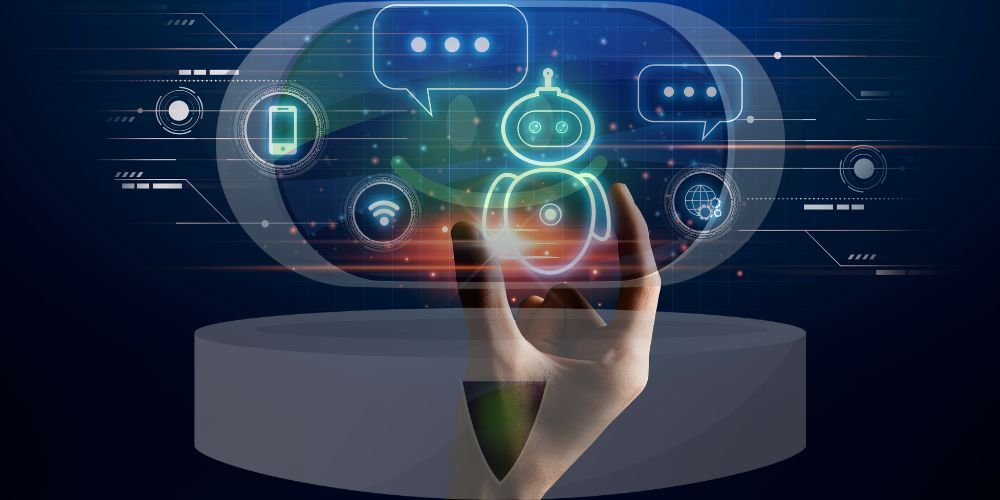AI-powered virtual assistants have emerged as indispensable tools, transforming how individuals and businesses manage tasks, access information, and streamline daily activities. This article explores the intricate realm of AI-powered virtual assistants, delving into their fundamental principles, diverse methodologies, key advantages, notable applications, and the challenges they navigate in the evolving landscape of digital assistance.
Unveiling AI-Powered Virtual Assistants
AI-powered virtual assistants are intelligent software programs designed to perform tasks, answer queries, and facilitate interactions through natural language processing and machine learning algorithms. These virtual assistants leverage artificial intelligence to understand user inputs, learn from interactions, and adapt to user preferences over time. This transformative technology brings a new level of efficiency and convenience to personal and professional environments.
The Role of Natural Language Processing (NLP) in Virtual Assistants
At the core of AI-powered virtual assistants is Natural Language Processing (NLP), a technology that enables machines to understand and respond to human language. NLP algorithms empower virtual assistants to comprehend user queries’ context, intent, and nuances, facilitating seamless and natural interactions. This capability allows users to communicate with virtual assistants conversationally, enhancing the user experience.
Machine Learning Adaptability for Personalization
Machine learning is pivotal in the adaptability and personalization of AI-powered virtual assistants. These assistants learn from user interactions, analyze patterns, and refine their responses over time. By understanding user preferences, behavior, and context, virtual assistants can provide tailored and relevant information, making them increasingly adept at meeting individual needs.
Voice Recognition Technology Enhancing User Interaction
Voice recognition technology is a key component that enhances user interaction with AI-powered virtual assistants. Users can communicate verbally with the assistant, issuing commands, asking questions, or dictating messages. This hands-free and voice-activated functionality adds a layer of convenience, especially in situations where manual interaction is impractical or unsafe.
Advantages of AI-Powered Virtual Assistants
The adoption of AI-powered virtual assistants offers many advantages, revolutionizing how tasks are managed, information is accessed, and daily activities are organized.
Increased Efficiency and Productivity
One of the primary advantages of AI-powered virtual assistants is the significant boost in efficiency and productivity. These assistants can set reminders, schedule appointments, and send messages quickly and accurately, allowing users to focus on more complex and value-driven activities.
Seamless Integration Across Devices
AI-powered virtual assistants seamlessly integrate across various devices and platforms. Whether on smartphones, smart speakers, or computers, these assistants provide a consistent and interconnected experience. This versatility ensures users can access their virtual assistant from multiple devices, promoting continuity and accessibility.
Time-Saving Automation of Routine Tasks
Virtual assistants excel at automating routine and repetitive tasks, saving users valuable time. From sending emails to managing calendars, these assistants streamline day-to-day activities, enabling users to allocate their time and energy to more strategic and creative endeavors.
Enhanced Accessibility for Diverse User Needs
The adaptability of virtual assistants extends to diverse user needs, making technology more accessible. Voice commands and natural language interactions benefit individuals with disabilities, providing many users with an inclusive and user-friendly experience.
Applications of AI-Powered Virtual Assistants
AI-powered virtual assistants find applications across diverse domains, enhancing user experiences in both personal and professional spheres.
Virtual Assistants in Customer Service
In customer service, AI-powered virtual assistants are employed to handle queries, provide information, and assist users in navigating products or services. Through their ability to understand natural language, these assistants contribute to improved customer satisfaction by offering timely and accurate support.
Virtual Personal Assistants for Time Management
Virtual personal assistants play a crucial role in time management by helping users organize their schedules, set reminders, and prioritize tasks. These assistants become indispensable tools for individuals seeking efficient ways to manage their daily routines and obligations.
Integration with Smart Home Devices
AI-powered virtual assistants seamlessly integrate with smart home devices, helping users to control their smart homes using voice commands. From adjusting thermostat settings to controlling lighting and security systems, these assistants enhance the overall smart home experience.
Virtual Assistants in Healthcare for Information Retrieval
In healthcare, virtual assistants assist professionals in retrieving information, accessing patient records, and providing medical updates. These assistants’ natural language processing capabilities streamline communication and information retrieval, contributing to more efficient healthcare workflows.
Challenges in AI-Powered Virtual Assistants Adoption
Despite the advantages, integrating AI-powered virtual assistants presents challenges that users and developers must address for optimal functionality.
Privacy and Security Concerns
Privacy and safety are key concerns in the adoption of AI-powered virtual assistants. As these assistants often handle sensitive information, ensuring robust security measures and safeguarding user privacy become paramount to building and maintaining user trust.
Accuracy and Understanding Complex Queries
AI-powered virtual assistants may face challenges in accurately understanding complex queries or interpreting nuanced language. Enhancing the accuracy of responses and refining the understanding of intricate commands remains a focus area for continuous improvement.
Overcoming Language Barriers and Accents
Language barriers and diverse accents challenge virtual assistants, especially in understanding and responding to users from different linguistic backgrounds. Ongoing advancements in natural language processing aim to address these challenges, promoting inclusivity and global accessibility.
Future Trends in AI-Powered Virtual Assistants
As technology evolves, future trends in AI-powered virtual assistants point towards even more advanced and sophisticated capabilities.
Multimodal Interactions for Enhanced User Experience
The future of virtual assistants involves multimodal interactions, incorporating both voice and visual and gestural inputs. This expansion into multimodal capabilities aims to provide a more immersive and intuitive user experience, allowing users to interact with virtual assistants in diverse ways.
Integration with Augmented Reality (AR) and Virtual Reality (VR)
Virtual assistants will likely integrate with augmented reality (AR) and virtual reality (VR) technologies, creating immersive and interactive experiences. This integration allows enhanced virtual collaboration, remote assistance, and dynamic information visualization.
Context-Aware Virtual Assistants for Proactive Support
The evolution of virtual assistants involves becoming more context-aware and providing proactive support based on the user’s context, location, and preferences. Context-aware virtual assistants can anticipate user needs and offer assistance or information without explicit requests, enhancing overall user satisfaction.
Conclusion
AI-powered virtual assistants stand at the forefront of technological innovation, reshaping how individuals and businesses interact with digital environments. Their ability to understand natural language, adapt to user preferences, and automate routine tasks has positioned them as indispensable tools for increased efficiency and convenience. While challenges persist, ongoing advancements and future trends indicate a dynamic and promising future for AI-powered virtual assistants, with applications expanding into new frontiers of user interaction and assistance.










